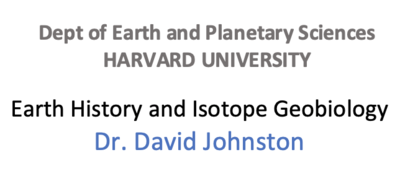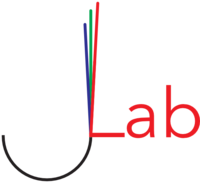In the Johnston Lab, a lot of research depends on the ability to make very precise measurements of very small amounts of stuff. So, for this inaugural blog post, it seemed only fitting to spotlight the instruments that make the lab’s research (and the research of many other labs in many other fields) possible. We’re pleased to present an ultra-abbreviated history of mass spectrometry -- a word that, no matter how many times you say it, will always sound like it has too many R’s.A lot of the information here, by the way, comes from a 2011 article by John Yates III, who’s documented this history in depth. He and others credit the physicist J.J. Thomson (of electron and “plum pudding model” fame) with the development of the first mass spectrometer around the turn of the twentieth century. This early machine, though it would be significantly improved in the decades to come, relied on the same fundamental processes as modern mass spectrometers: ionization, particle deflection based on mass-to-charge ratio, and detection. (F.W. Aston, one of Thomson’s students, also used the instrument to demonstrate the existence of stable isotopes, which are somewhat important to the Johnston Lab.)
By the mid-twentieth century, mass spectrometry’s role in both academic and industrial laboratories was growing. The instrument was deeply involved in the Manhattan Project during World War II, after physicist Alfred Nier used it to separate 238U and 235U and helped demonstrate that the latter was the isotope involved in nuclear fission. As Jennifer Griffiths writes, around the 1950s, mass spectrometry was in wide use as a means of quality control, allowing chemists to monitor impurities in industrial products.
But the field was growing fast. Throughout the 1950s, the chemist Klaus Biemann and other researchers started to use mass spectrometry to determine the structure of small molecules -- including, eventually, small organic molecules. Larger molecules were tough to ionize without degradation, but the development of new ionization methods in the late 1980s changed the game. Since then, the biological applications of mass spectrometers, like peptide sequencing and drug development, have gained traction.
Nowadays, mass spectrometers have all kinds of uses. They’re increasingly involved in disease diagnosis, detecting biomarkers with incredible sensitivity. They’re a routine part of food inspection. They’ve even been used since 1972 to monitor for the use of performance-enhancing drugs at the Olympics. And of course, closest to our hearts, they help us examine Earth’s processes and understand our planet’s past and present.
(Written by Maddie Goldberg)


